Montessori Weaning Table Explained by Jeanne-Marie Paynel, MEd
In this episode we're talking about:
- How Montessori differs from conventional education and utilizes the tools of observation
- What the 4 different areas of the Montessori house are how a weaning table can benefit
- Why Montessori endorses letting children sleep on a floor mattress vs. in a crib
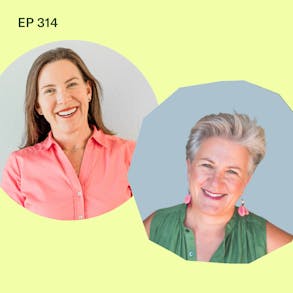
LISTEN TO THIS EPISODE
Episode Description
What’s the deal with the Montessori weaning table? Is it just a glorified kids’ table or are there real benefits from having your child eat at a small table from a small chair? I’ve always been curious about this idea of the weaning table…because there are a lot of overlaps with the baby-led weaning approach and the Montessori methods - so I wanted to speak with a Montessori specialist and my guest today is Jeanne-Marie Paynel…she is a Montesorri parenting mentor with a Masters Degree in Montessori education and she’s going to break down the basic arrangement of the Montessori feeding area of the house with or without use of the weaning table.
About the Guest
- Jeanne-Marie Paynel, MEd is a parenting mentor with a Master’s Degree in Montessori education
- She helps families implement the teachings of Maria Montessori to see their homes from the child’s perspective
Links from this Episode
- Follow Jeanne-Marie online at http://www.yourparentingmentor.com/
- Listen to Jeanne-Marie’s podcast The Art of Parenting https://voilamontessori.com/the-art-of-parenting-podcast/
- Follow Jeanne-Marie on Instagram: https://www.instagram.com/jeannemariepaynel/
- Baby-Led Weaning with Katie Ferraro program with the 100 First Foods™ Daily Meal Plan, join here: https://babyledweaning.co/program
- Baby-Led Weaning for Beginners free online workshop with 100 First Foods™ list to all attendees, register here: https://babyledweaning.co/baby-led-weaning-for-beginners

Latest Episodes
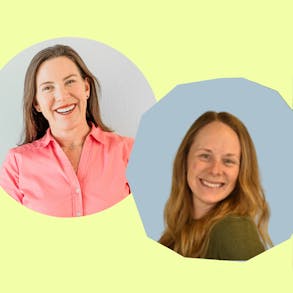
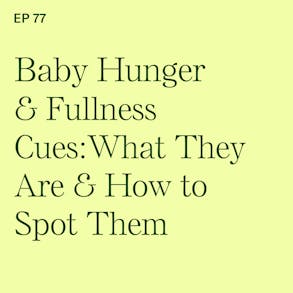
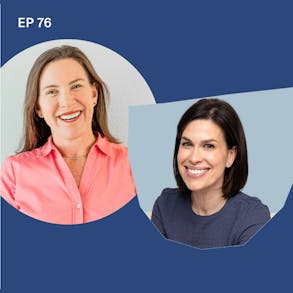

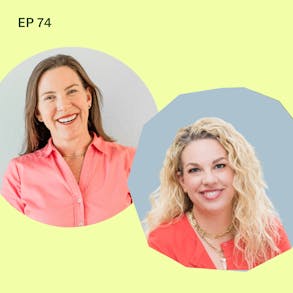
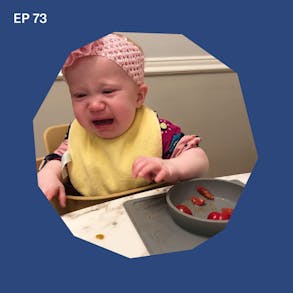
Katie Ferraro (1m 2s):
Once the child has shown us that they naturally on their own can be in a seated position, we invite them to sit at a Weaning table. And a Weaning table basically is a very low table with a little chair that is very low to the ground. So their feet are firm on the ground. And this is a way that we introduce the self feeding because it is this idea that now food becomes a different type of relationship. Hey there. I'm Katie Ferraro, registered dietitian, college nutrition professor and mom of seven specializing in baby-led weaning here on the Baby-Led Weaning Made Easy podcast.
Katie Ferraro (1m 44s):
I help you strip out all of the noise and nonsense about feeding, leaving you with the confidence and knowledge you need to give your baby a safe start to solid Foods using baby-led weaning. Are you guys familiar with this concept of the Montessori Weaning table? It's like a kid's table, A really small table with a small chair for children to sit at and for children to eat from. And advocates of the Montessori approach to Parenting and education are fans of this idea of the Weaning table, which can range in cost anywhere from a hundred dollars, you know, comparable with the standard high chair and then it kind of goes up from there. In full disclosure.
Katie Ferraro (2m 24s):
I've never purchased, bought, worked with, had a kid that ate from a Montessori table, but I see that and I'm, I'm curious about this idea of the Weaning table because you know, there are a lot of overlaps with the baby-led weaning Approach to starting solid foods and some of the Montessori methods. so I wanted to speak with a Montessori specialist and my guest today is Jeanne-Marie Paynel. Now Jeanne Marie is a Montessori Parenting mentor. She has a master's degree in Montessori education and Jean-Marie is going to talk a little bit about Montessori in general, the four different areas of the Montessori home. We're gonna focus on the feeding area and how the Weaning table plays into this. The pros, the cons of it. I'll kind of share my thoughts on it and how it might not be totally aligned with baby-led weaning, but then also if you are using a highchair, how you can incorporate some of the ideas of Montessori in your feeding environment.
Katie Ferraro (3m 13s):
But she's also gonna be talking about the sleeping room for Montessori always kind of blows my mind when I see you guys with all your pictures and videos of the floor beds that you're using. I'm a crib person, but hey, you know, babies feeding themselves brisket is not for everyone too. So I get it. Okay. The point here is to learn about different approaches and I'm really grateful that John Marie Pinnell is here to share about this idea of the Weaning table and whether or not we really need one.
Jeanne-Marie Paynel (3m 42s):
Well, thanks for having me. It's a delight to be here.
Katie Ferraro (3m 45s):
I am so excited. I know we have talked extensively kind of preparing for this episode and I am so interested to learn everything about Montessori Parenting with, with exceptional interest in this idea of the Weaning table. But before we get started, could you just give our audience a little bit of a background and let us know what it is that you do in the Montessori and Parenting space?
Jeanne-Marie Paynel (4m 4s):
Sure. So I am a, I call myself a Parenting mentor and basically it comes from the fact that in midlife I decided to change complete careers and went back to school, got a master's in Montessori education and fell in love with all of the principles that I felt parents really needed to know about these, you know, kind of important principles about raising another human being. And so I've really been on a mission for the past, you know, 20 years to really share all of this information and understanding that Montessori starts at birth and goes through adolescence.
Jeanne-Marie Paynel (4m 46s):
So really that big chunk of our life where we are Parenting and if we have all of this valuable information that, you know, Dr. Maria Montessori discovered more than a hundred years ago, it makes life just a bit easier. So that's, that's where I'm at.
Katie Ferraro (5m 3s):
And I know you're based in San Diego, as am I, so I know you've kind of Yes. Been dipping your toe back in, in-person events. I went to an in-person event in LA yesterday and it was like amazing, but I was also like, ah, I just spent six hours in a car. Like I do not miss that part of in-person stuff. Yes. But tell us a little bit about the work you do on a day-to-day basis.
Jeanne-Marie Paynel (5m 22s):
So basically I work both privately and in group settings. I also do consultations in schools. So sometimes a school might need a bit of mentoring for their teachers or they're interested in Montessori and want to adapt the environment. So I go in and do a little bit of training with the teachers and then look at the environments and give them advice there. But where I really love working is directly with parents. So that's my, my one-on-one program where I really help them see their homes from their child's perspective, from really the, the needs that our little ones have and really, you know, let them understand that we've been living in a very adult centric environment.
Jeanne-Marie Paynel (6m 11s):
And when we welcome little ones, well they have different needs than ours. So it's really about welcoming a guest that has different needs into our homes and how do we adapt that all the while keeping it super simple. I'm, I err on the minimal list side, so I don't, you know, want you to feel overwhelmed. So I do that. I also am a birth doula, so I work with families also before birth. And then I love the postpartum visits where, you know, again, I get to help them understand a little bit more about their children's needs.
Katie Ferraro (6m 46s):
And you're also the host of your own podcast, the Art of Parenting. What inspired you to start that podcast?
Jeanne-Marie Paynel (6m 54s):
So that really a few years back when I first started my business, I was doing some interview summits, right? It's, it's where you interview and I remember being so nervous about reaching out to, you know, people like you who are experts in their field and everything. And then once I got going, I really enjoyed having these in-depth conversation. And also the feedback that I got from parents was extraordinary. Where it was, you know, the, the, the way that I was asking questions, interviewing them just really helped them see Parenting in a different light. And so I decided that why do just these 21 day summits, like I could be doing this every day.
Jeanne-Marie Paynel (7m 39s):
So that's really where I started the Art of Parenting, where I interview experts, sometimes I do just, you know, q and a myself or you know, if there's a topic that I wanna share about. And I've just really enjoyed having in-depth conversation with experts in a variety of fields that pertain to Parenting. So that's where the art of Parenting came from.
Katie Ferraro (8m 2s):
On my interminable card ride home from LA yesterday, I was listening to your episode about Liberated Parenting with Yolanda Williams and I really enjoyed it. I find podcasts are one of the best ways to educate yourself, especially about concepts that might be new or unfamiliar or if you're uncertain about, gosh, you know, is this really for me? And I'm curious if you could summarize for our audience, you know, what are the basic principles of the Montessori method and maybe how does that differ from, I don't know if you would say more traditional education or child rearing, what is the, the crux of Montessori all about?
Jeanne-Marie Paynel (8m 35s):
Okay, so I have been corrected on the use of traditional, so it is conventional, not traditional because there are cultures that have different traditions. So in, in that sense, so the main picture or the main difference with Montessori education, so this is about, you know, more of a school setting, is this notion that we are all born with the desire to learn and to adapt to our time, place, and culture, right? And this happens from the very beginning. So understanding that and knowing that we just need to really follow the child.
Jeanne-Marie Paynel (9m 15s):
So it's really, it's an education that is child driven, that we trust that children just have a desire to learn and that they basically have this inner knowing that they know what they need to learn to, to move along, right? And so instead of it being like in the conventional education where it is very adult driven, where it is an adult who is going to decide, you know, with their lesson plan what these 25 little children are going to learn. Contrary to that, when I had 25 Lola children, and it's a mixed age group also, which is a big difference with conventional education where we separate children by birthdays here, we're keeping them in the same environment for three years.
Jeanne-Marie Paynel (9m 59s):
So they really socialize with younger children, older children, and it's just beautiful to see how they help each other. But I had, so having, you know, 25 little ones that were ranging from two and a half to five and a half, I had 24, 25 different lesson plans. So it's very individualized education, it is child driven, it is also very hands on. So a lot of manipulatives, a lot of concepts that is really first taught in a very sensorial sense without, you know, trying to put equations to things, but letting them work with these three dimensional puzzles, which later on is going to reveal an a formula, for example.
Jeanne-Marie Paynel (10m 46s):
So it's very sequential. We work with a progression and we really let the child repeat activities as many times as they need to, to feel that they have mastered the skill that is at hand. And I think that is a really important one where we really respect the child's flow and the child's concentration, which again, in conventional education, we're gonna interrupt our children just about every 20 minutes to ask them to change activities to go on to something else. Well, not everybody, you know, can work in a 20 minute timeframe. Some children will need to repeat an activity 3, 4, 5 times before they, they grasp it, right?
Jeanne-Marie Paynel (11m 31s):
And so a big part of Montessori education and Montessori at home is this idea that we are guides. We are really, we've been on planet earth a bit longer and we're just helping them, you know, find their way in guiding them. And we use the tool of observation, observation without judgment, without, you know, preconceived ideas without comparison. But just see what they're interested in and feed that curiosity more. So that's why I say it's really child driven. We look at each individual child,
Katie Ferraro (12m 5s):
Hey, we're gonna take a quick break, but I'll be right back.
Katie Ferraro (13m 13s):
And of course, so many of the things that you're saying are resonating with our audience and parents and caregivers who are interested in baby-led weaning and that whole baby-led approach. you know, this notion that exactly Babies can eat so many more foods than we give them credit for. We don't have to do it all for them. I wanna talk about kind of the overlap between our two areas. This notion of a Weaning table or a Montessori Weaning table. What is it, is it necessary? What are your thoughts on the Weaning table? We get tons of questions from parents who are interested in Montessori and doing baby-led weaning, like what's the deal with the Weaning table?
Jeanne-Marie Paynel (13m 46s):
Right? Right. So, so, so just to backtrack just a little bit before I, I am I answer your question is the, the idea of Montessori in our homes, we are, like I said, we're really looking at the environment from the child's perspective and from day one we try to set up these four different areas in the home kind of as a point of reference for them so that they know what happens in each of the areas, right? So there's gonna to be a sleeping area, a feeding area, a physical care area, and then the movement area, which evolves pretty quickly because once they start getting mobile, and so knowing that we have those four environments, the feeding one at first is, you know, very adult centric because we want the caregiver to be comfortable while they are, whether they're, you know, breastfeeding or bottle feeding, that they're, they have this relationship with the child.
Jeanne-Marie Paynel (14m 47s):
And so the idea of the Weaning table in Montessori is first of of all, when we say Weaning, we're not talking about Weaning them off breast milk, you know, it's just about the introduction to solid Foods. So the idea of the Weaning table is once the child has shown us that they naturally on their own can be in a seated position, they might need, you know, a little bit of prop, but they're able to get themselves in a seated position, we invite them to sit at a Weaning table, and a Weaning table basically is a very low table with a little chair that is very low to the ground.
Jeanne-Marie Paynel (15m 29s):
So their feet are firm on the ground and this is a way that we introduce the self feeding, right, or that we are, we are feeding them because it is this idea that now food becomes a different type of relationship. Up until now, they have been in our arms, we've been, you know, we've been holding them close to us, feeding them with a bottle here we're, we're kind of sitting across from them and we're having more this, this interaction around food. And that's the idea of the Weaning table. And then the Weaning table can, you know, then stay for when they have snack on their own for example and things like that.
Jeanne-Marie Paynel (16m 15s):
But the idea also, and why I wanted to say like do we really need one is that I feel sometimes families who want to kind of adopt Montessori principles in their home feel a little stuck in, oh, well if I don't have this then I'm not really doing it. So I just want to, you know, say it loud and clear. Like you don't have to have a Weaning table to do things properly, right? It's more about how you interact with your child when it comes to food. So if you don't have a Weaning table, what I invite you to do and I in, you know, invite all families to invest into highchairs that are not isolated where they can come to our dining room table because again, food is a social interaction.
Jeanne-Marie Paynel (17m 6s):
We're coming together and I really, really encourage families from, you know, as soon as they possibly can to have meals together at least once a day. This is where the child is going to observe how we use our utensils, how we interact at the table, the conversations we have. And it's just, for me, it's just a, a beautiful tool to have as a family, especially when they grow up and they're, you know, things that might, we might not see or hear about if we don't have that place to meet up every day to have our meals together.
Katie Ferraro (17m 44s):
And I love, you're kind of adding that piece in that this doesn't have to be expensive and "you're not doing it the wrong way if you're not able to buy a $300 Weaning table".
Jeanne-Marie Paynel (17m 54s):
And I, yeah, I've actually had fathers make the Weaning table because I have a little plan, they love it. Fathers and grandfathers for some reason have downloaded that and made the Weaning table. So it's super easy to make, but it's more like some people say, but I don't have the space. It's like, well you don't then you don't have to do it. It's more about this interaction.
Katie Ferraro (18m 14s):
So yes, and a lot of the Weaning tables just, if you guys are kind of looking into them, they're really only safe for children age two and up because it's a little chair and the child is not restrained. And the notion is the freedom of the toddler being able to climb in and out at their own will. But of course, you know, early on in self feeding, we do need the babies to be securely positioned and sitting in a safe seating environment. And so Jeanne Marie mentioned some of the highchairs that are kind of overlapping with the Montessori approach in the baby-led approach. And the stokke tripp trapp is one that comes to mind. And I know a lot of Montessori families like that chair, that chair was designed by Peter Opsvik in 1972. It is this iconic kind of wooden ladder design, a small footprint.
Jeanne-Marie Paynel (18m 56s):
You pull it right up to the table with the notion being that your baby can be joining you at the table and kind of fostering this idea of family meals, even from the baby's first bites. I know a lot of Montessori is kind of looking at life through the lens of a child. One thing I always des struck me and, and I did, I never have purchased or utilized a Weaning table myself, but it just sometimes makes me sad to see the little toddlers sitting by themselves. If you have one kid, they're not sitting at the table eating with the family, they're sitting at the Weaning table by themselves. And I was just curious about your thoughts on that because that's not aligned with the notion of family meals if the child is eating by themselves, Right? So the Weaning table, if you do have one, so first of all, for me it is safe to use way before two, right?
Jeanne-Marie Paynel (19m 40s):
And like I said, it's when they are able to sit independently and you might put, you know, a few little pillows to hold them up, right? If you want to kind of restrain them in a little bit, put them, you know, back to the wall and push the table up, you are sitting in front of the table. So you are there kind of in front to, to help them. But for me, the winning table is not, and just like the high chairs with the platter, I mean, I don't want a child to be by themselves, right? So it's not, it's not about this completely independent child once in a while, like using the waiting table for snack, like for when the child is a little bit older and actually walking and being able to take things to their table and sit down and have a snack.
Jeanne-Marie Paynel (20m 30s):
Sure. Because, you know, the whole family is not gonna sit down for snack every day. But yeah, I totally agree with you. Like for me, the, the first of all, the trip trap, and I actually have one, my daughter is now 26, I still have hers because the, the beauty of the trip trap is that it, you, you move the place where they set their bottom and where they put their feet so it, it grows with them. So it is a little bit of an investment, but you have it for the rest of your life. But yet to go back to the Weaning table, to me it is sad when we see them by themselves. So I really encourage if you have, you know, more than one child and you are sitting down and having a family meal, please invite the baby to sit with you at the table, whether you know, whether they're eating with you or not.
Jeanne-Marie Paynel (21m 20s):
Because sometimes, you know, they're on different schedules, but at least that they're there, that they're part of the community. That's very important.
Katie Ferraro (21m 28s):
Hey, we're gonna take a quick break, but I'll be right back. So Jeanne Marie, one question I have to ask.
Katie Ferraro (22m 39s):
I know we're talking a lot about feeding today, but I'm interested in one of the other pillars of Montessori, the sleeping area. I know one of my friends's, big Montessori advocate and I was so surprised we had babies around the same time when I walked into her kids' room and the mattress was on the floor and I was like, oh, do you, are you like waiting for your crib to get delivered? What's going on? You're just like, no, my children sleep on a mattress on the floor. And I had never heard of that. So could you share a little bit about the notion behind the sleeping area?
Jeanne-Marie Paynel (23m 6s):
Yes, yes. And I love this question because that is a big kind of tenant of, of, you know, setting up the Montessori environment at home. And the idea about using a floor bed as opposed to a crib is the idea that we want to give our children freedom of movement and that the notion that from birth, they are still developing their visual sense So, we are placing them on a surface where they can see the entire environment as opposed to in a crib that is, you know, behind bars or behind the bumper pad or whatever.
Jeanne-Marie Paynel (23m 47s):
So they're not seeing the entire room. And then the idea of the freedom of movement is that, and it's a big, big, big part of it is about trusting the process, trusting yourself, trusting your child. But I have seen it work, I have done it myself when we invite a child to sleep on a floor bed from the very beginning. So when I say the very beginning, I like to use like a Moses basket, maybe the first two or three months, but I'm still putting it on the floor bed so that they can see where they're at. And a floor bed can also be in the parent's room if they want to, you know, share the room at the beginning.
Jeanne-Marie Paynel (24m 27s):
But the idea about the floor bed is that from the beginning we are trusting the child to know that this is the area where we settle down, relax and sleep. And as they become more mobile, they will be able to slither to the edge. They will feel that there is a difference. They will slither back if they roll off. That is part of learning that it's way more comfortable to stay on the floor bed. And remember this is a low mattress on the bed, so they're not falling from very high. Oftentimes you have a nice, you know, carpet underneath it, whatever. But what is the beauty of it is that the child, when the child is tired, they will go to that area and settle down.
Jeanne-Marie Paynel (25m 14s):
When the child is done sleeping and resting, they will get up and entertain themselves. They will not scream bloody murder, get me out of this container. And it again, it goes, you know, with this whole principle of Montessori is that we're, we're following the child. And so here by inviting them to give them this space, we're also trusting them to know when they are tired as opposed to them being always depending on us to read their cues and so forth. So a beautiful, beautiful approach. It doesn't work for everybody, but I think that if you trust yourself and know that it will work, it's, it's beautiful. That same friend, like her second baby was born the same time as my quadruplets were born and we kind of looked at each other and like, okay, we have different situations.
Jeanne-Marie Paynel (26m 1s):
Like I can't imagine like the four babies rolling around together. I've seen it with twins and it's beautiful. I mean, the twins will often end up on the same mattress.
Katie Ferraro (26m 12s):
Yeah.
Jeanne-Marie Paynel (26m 12s):
Because that's, you know, that's what they prefer. But it's, I, I've seen it work in, in many homes with, you know, twins and, and it works beautifully. So.
Katie Ferraro (26m 22s):
Oh, wonderful. Well thank you so much for sharing these ideas and the notion, and I think Montessori can be confusing or overwhelming to some families. And I really love kind of just the simplistic approach that you give us and tell us where our audience can go to learn more about your work, Jeanne Marie.
Jeanne-Marie Paynel (26m 37s):
So mainly my website, your parentingmentor.com. There you can actually download some freebies. I have, I have one actually for setting up the nursery, things like that. And otherwise my podcast, "The Art of Parenting".
Katie Ferraro (26m 52s):
Well, thank you so much. It was a pleasure talking with you. My pleasure,
Jeanne-Marie Paynel (26m 56s):
thank you.
Katie Ferraro (26m 57s):
Well, I hope you guys enjoyed that interview with John Marie Paynel. If you're using a Weaning table and you're doing baby-led weaning, send me some videos, tag me in your pictures or your videos. I'm on Instagram @ babyledweanteam. You can check out all of Jeanne Marie pin's resources on the show notes page for this episode, which you can find at blwpodcast.com/314. And a special thanks to our partners at AirWave Media. If you guys like podcasts that feature food and science and using your brain, AirWave Media has some great podcast offerings, check them out. You can check us out online at blwpodcast.com. Thanks again for listening and I'll see you next time.
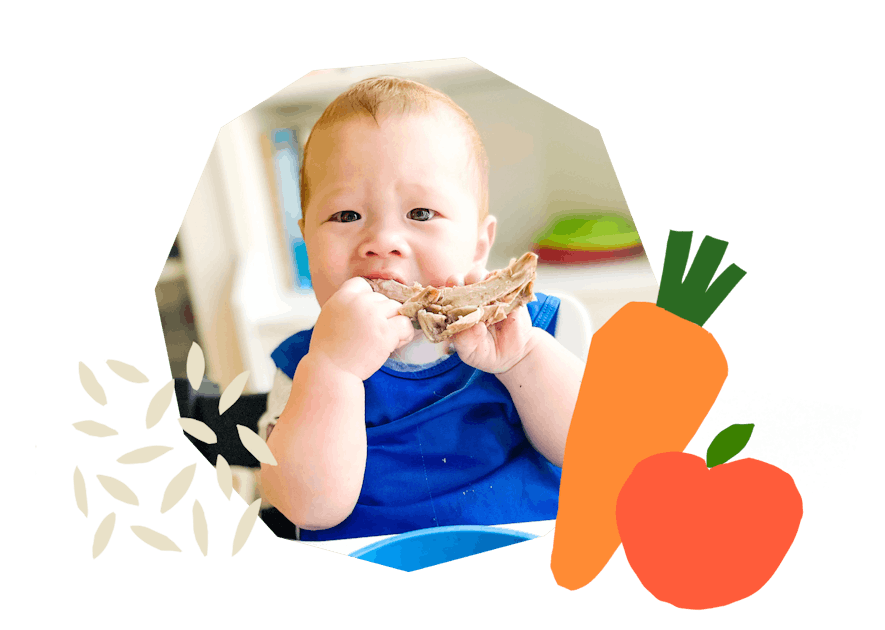
The Program Baby-Led Weaning with Katie Ferraro
A step-by-step digital program for starting solid foods safely and navigating the original 100 FIRST FOODS™ meal plan with baby-led weaning.
 EXPERT-LED, PROVEN APPROACH TO EATING REAL FOOD
EXPERT-LED, PROVEN APPROACH TO EATING REAL FOOD CONCISE VIDEO TRAININGS TO MASTER BABY-LED WEANING
CONCISE VIDEO TRAININGS TO MASTER BABY-LED WEANING 100 FIRST FOODS DAILY MEAL PLAN WITH FOOD PREP VIDEOS
100 FIRST FOODS DAILY MEAL PLAN WITH FOOD PREP VIDEOS
Baby-Led Weaning for Beginners Free Workshop
Is your baby ready to start solid foods, but you’re not sure where to start? Get ready to give your baby a solid foundation to a lifetime of loving real food…even if you’re feeling overwhelmed or confused about this next stage of infant feeding.
Get baby-led weaning recipes and tips delivered to your email inbox.

